You’ve just gotten through a painful shingles outbreak, and now the rash is finally scabbing over. The next question that pops into your mind is: Will I be left with a scar? The good news is that, with the right steps, you can dramatically reduce—or even prevent—that unwanted reminder. Below, I’ll walk you through everything you need to know, from why shingles can scar to the daily habits that keep your skin smooth. Think of this as a friendly chat over a cup of tea, where we share practical advice, a few personal stories, and a sprinkle of science.
Why Scars Form
Shingles, also called herpes zoster, is a reactivation of the chicken‑pox virus that hides in your nerves. When it awakens, it creates a painful rash that can blister, ooze, and finally crust over. While many people expect the rash to disappear without a trace, a surprising number end up with a shingles rash scar or a patch of skin discoloration.
What Triggers Scar Formation?
Scarring happens when the skin’s natural healing process goes a little overboard. In the case of shingles, the virus causes intense inflammation, and the blisters can break open. If the wound isn’t cared for properly, the body lays down extra collagen, which shows up as a raised or darker patch.
Who’s at Higher Risk?
Not everyone who gets shingles ends up with a scar. Certain factors raise the odds:
| Risk Factor | Why It Matters |
|---|---|
| Age > 60 | Skin heals slower and is more prone to pigment changes. |
| Diabetes | Impaired circulation can delay wound closure. |
| Severe rash (large area, many blisters) | More tissue damage = higher scar risk. |
| Picking or scratching | Disrupts natural healing, invites infection. |
| Weakened immune system | Slower virus clearance prolongs inflammation. |
These points line up with what Healthline found in its 2025 review: older adults and people with chronic conditions are the most likely to notice lasting marks.
Golden Treatment Window
The fastest way to keep a scar from ever forming is to jump on treatment early. Experts call the first 72 hours after the rash appears the “golden window.” During this period, antiviral medication works its magic, shrinking the outbreak and softening the inflammation before the skin even thinks about laying down excess collagen.
Which Antivirals Work Best?
Common prescriptions include:
- Acyclovir (Zovirax) – typically 800 mg five times a day for 7‑10 days.
- Valacyclovir (Valtrex) – 1 g three times daily, same duration.
- Famciclovir (Famvir) – 500 mg three times daily.
All three are most effective when started within three days of symptom onset. If you’re unsure when the rash began, a quick call to your doctor can still be worthwhile—sometimes even a partially‑treated outbreak can benefit from antivirals.
What If I Miss the Window?
Don’t panic. While antivirals lose some punch after 72 hours, you still have plenty of tools to protect your skin:
- Prescription pain relievers to keep you comfortable (and therefore less likely to scratch).
- Topical steroids or calcineurin inhibitors to tame inflammation.
- Consistent wound care—clean, moisturize, and protect the area from the sun.
Daily Care Steps
Think of your shingles scar prevention routine as a “skin‑first” habit checklist. You don’t need a PhD in dermatology—just a few minutes each day.
Don’t Pick, Don’t Scratch
This one feels obvious, yet it’s the most common mistake. The urge to relieve itching can lead to opening blisters, which opens the door to bacterial infection and deeper scarring. The Kaiser Permanente guide even warns, “Don’t open your blisters” and recommends gentle compression instead.
Gentle Cleaning & Compression
Two times a day, soak a clean gauze in a mixture of ¼ cup white vinegar and 2 quarts lukewarm water, then apply it to the scab for about ten minutes. This simple rinse helps keep the area clean, reduces bacterial load, and gently softens the crust—mirroring what PMA Dermatology recommends.
Moisturize, Then Shield
After each compression, pat the skin dry and spread a thin layer of fragrance‑free moisturizer (think plain petroleum jelly or a silicone‑based gel). Keeping the wound moist encourages faster epithelial growth and less collagen overproduction.
When the scabs fall off, slather on a silicone gel sheet or a silicone cream. These products create a moist environment while also applying gentle pressure—exactly what the skin loves for smooth healing.
Sun Protection Is Non‑Negotiable
Even a light sunburn can darken a healing spot. Use a broad‑spectrum SPF 30 or higher, and reapply every two hours if you’re outdoors. Sunlight not only deepens discoloration but also slows the overall healing process.
Product Comparison
| Product | Type | Pros | Cons |
|---|---|---|---|
| Silicone Gel Sheet | Topical | Easy to apply, reusable, reduces raised scars | Can feel sticky on humid days |
| Petroleum Jelly | Moisturizer | Widely available, inexpensive | Doesn’t protect from sunlight |
| Fragrance‑Free Moisturizer | Moisturizer | Gentle, hydrates deeper layers | May need frequent re‑application |
Nutrition & Lifestyle
What you eat and how you live can speed up or slow down skin repair. Think of your body as a construction site—if you supply high‑quality materials, the building finishes faster and looks better.
Top Skin‑Repair Nutrients
- Vitamin C – essential for collagen remodeling. Citrus fruits, strawberries, and bell peppers are great sources.
- Zinc – helps immune function and wound closure. Find it in pumpkin seeds, chickpeas, and lean beef.
- Omega‑3 fatty acids – calm inflammation. Fatty fish (salmon, mackerel) or flaxseed oil work wonders.
- Protein – provides the building blocks for new skin. Aim for a palm‑size portion of lean protein at each meal.
Hydration & Sleep
Staying well‑hydrated keeps skin pliable, while 7‑9 hours of sleep each night boosts the production of growth factors that speed tissue regeneration. If you’re awake scrolling late at night, consider a glass of water and a short meditation instead of that third cup of coffee.
Sample 7‑Day Meal Plan
- Day 1: Breakfast—Greek yogurt with berries and chia seeds; Lunch—Turkey wrap with spinach and avocado; Dinner—Grilled salmon, quinoa, and steamed broccoli.
- Day 2: Oatmeal topped with sliced orange and walnuts; Lentil soup with whole‑grain toast; Stir‑fried tofu, bell peppers, and brown rice.
- …(continue similarly for Days 3‑7)
Even if you can’t follow the plan perfectly, aim for at least one vitamin‑C‑rich snack and a serving of healthy fat each day.
Professional Scar Care
Sometimes home care just isn’t enough, especially if a scar becomes raised, itchy, or discolored after a few weeks. That’s when a dermatologist’s toolbox comes into play.
Prescription Topicals
Doctors may prescribe:
- Corticosteroid creams – reduce lingering inflammation.
- Retinoids (e.g., tretinoin) – encourage skin turnover and fade pigment.
- Silicone‑based scar gels – proven to flatten raised tissue when used twice daily for 8‑12 weeks.
In‑Office Procedures
These are usually reserved for stubborn scars that haven’t responded to creams after three months:
- Laser resurfacing – targets pigment and stimulates collagen remodeling.
- Microneedling – tiny needles create controlled micro‑injuries, prompting fresh skin growth.
- Cryotherapy – freezes the scar tissue, which then sloughs off.
- Punch excision – surgically removes deep, pitted scars and stitches the area closed.
Cost & Results Overview
| Treatment | Typical Sessions | Downtime | Expected Improvement |
|---|---|---|---|
| Laser resurfacing | 1‑3 | 1‑2 days redness | 30‑70 % fade of discoloration |
| Microneedling | 4‑6 | Minimal | 20‑50 % flattening of raised scars |
| Cryotherapy | 1‑2 | Few hours swelling | 10‑30 % reduction |
| Punch excision | 1 | 1‑2 weeks | Complete removal of target scar |
Before you book any procedure, ask your dermatologist about their experience with shingles scar treatment specifically. The more they’ve seen, the better they can tailor the approach to your skin type and scar depth.
Bottom Line Summary
Preventing a shingles scar isn’t a mystery—just a mix of timely medical care, gentle daily habits, supportive nutrition, and, when needed, professional help. Here’s the cheat‑sheet you can keep on your fridge:
- Act fast: See a doctor within 72 hours for antivirals.
- Hands off the rash: No picking, no scratching.
- Clean & compress: Vinegar‑water soak twice daily.
- Moisturize & shield: Fragrance‑free moisturizer, silicone gel, SPF 30+.
- Eat skin‑friendly foods: Vitamin C, zinc, omega‑3, protein.
- Sleep & hydrate: 7‑9 hours, plenty of water.
- Know when to call a pro: Raised, itchy, or discolored scars after 4‑6 weeks.
Remember, you’re not alone in this. Thousands have walked the same path and emerged with clear, healthy skin. If you have questions, experiences, or a favorite home remedy, share them in the comments—let’s keep the conversation going. Your skin deserves the best, and so do you.







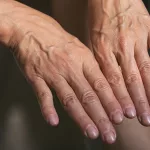

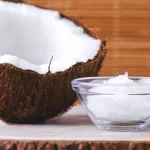
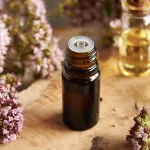

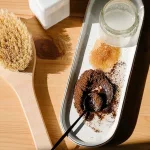


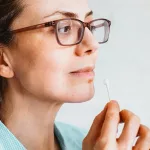


Leave a Reply
You must be logged in to post a comment.